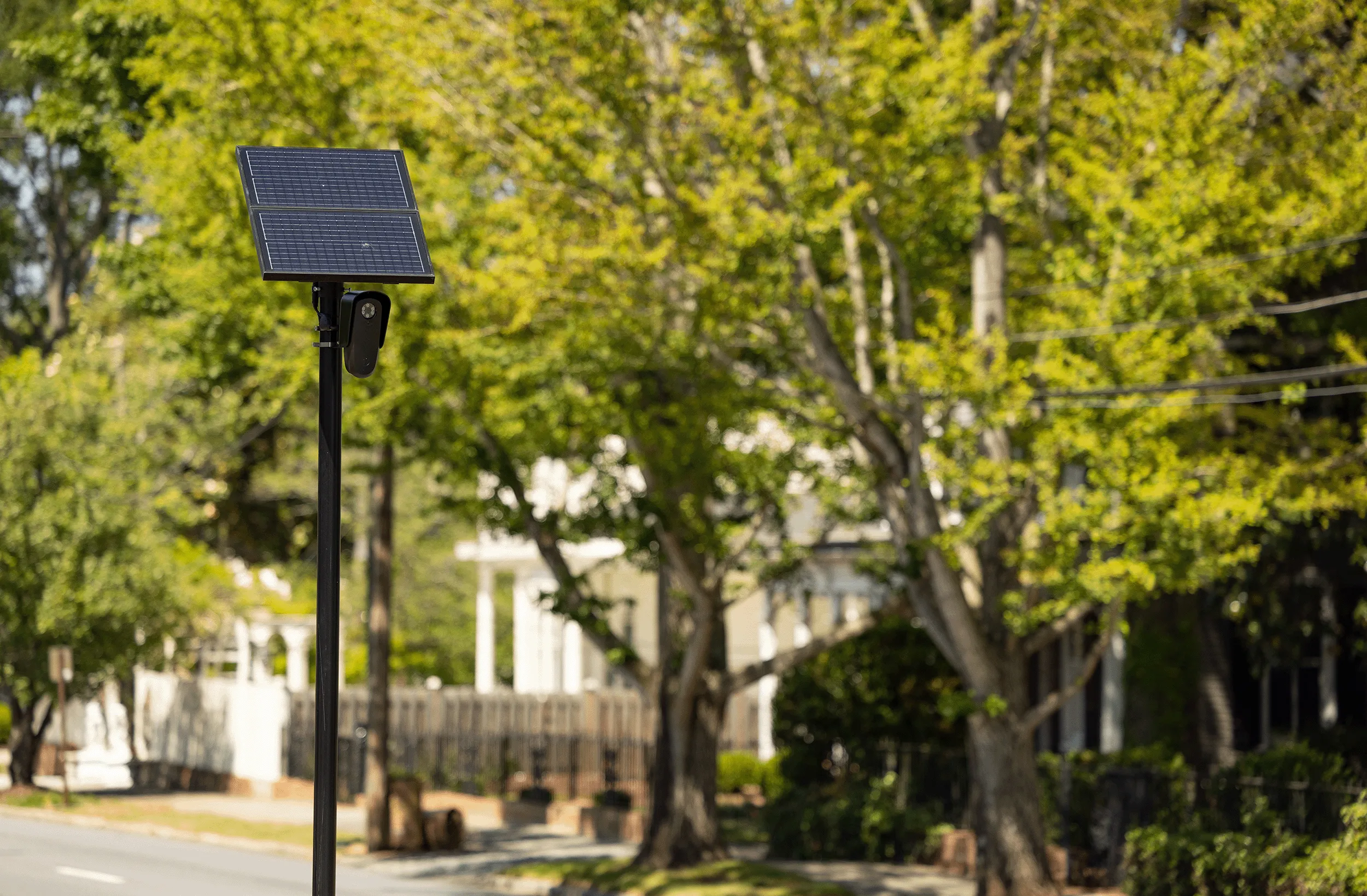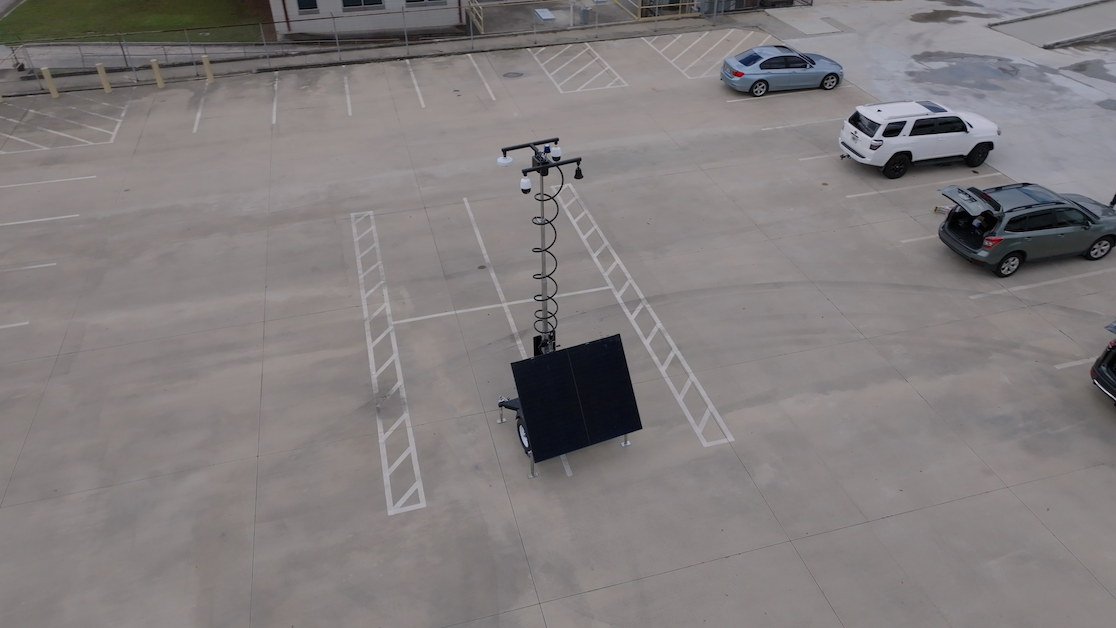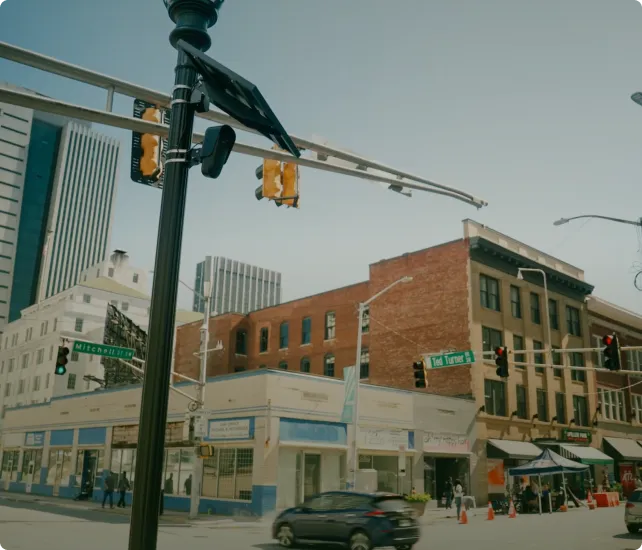


Why Flock?
Flock Safety empowers communities to reduce crime with real-time, privacy-first technology that fills evidence gaps and delivers faster case clearance.
Why Flock Safety matters
Crime affects everyone.
The FBI estimates that 1.2M violent crimes occur every year, and in nearly half those incidents, detectives lack sufficient evidence to clear cases. 7M property crimes occur annually, and fewer than 20% can be solved due to insufficient evidence.
What’s striking about this research is that it’s likely an undercount due to underreported crime. According to Gallup, about 1 in 4 U.S. households have been the victim of crime in the last 12 months, and “the rate of unreported crimes is important as it indicates that crime statistics based on a compilation of police records may significantly underestimate the amount of crime that occurs in the United States.” Tim Miller from the Pacific Institute for Research and Evaluation (PIRE) estimates that there are 120M crimes committed in the US every year, approximately 24M of which are violent crimes.
Those incidents add up in both financial and quality of life losses. According to Miller’s research, “estimated crime costs totaled $2.6 trillion ($620 billion in monetary costs plus quality of life losses valued at $1.95 trillion; 95 % uncertainty interval $2.2–$3.0 trillion). Violent crime accounted for 85% of costs. Principal contributors to the 10.9 million quality-adjusted life years lost were sexual violence, physical assault/robbery, and child maltreatment. Monetary expenditures caused by criminal victimization represent 3% of Gross Domestic Product – equivalent to the amount spent on national defense.”
We all recognize that crime is a fundamental threat to a productive society and we need to figure out a solution or solutions to end it. Law enforcement and the justice system continue to evolve, adapting to new tools, better policies and procedures, and working in parallel to the U.S. tenet of working toward a more perfect system. Technology, which has drastically changed every facet of society, will form the backbone of a fairer, more effective, more accurate law and justice system.
Why is crime so hard to solve?
If the vast majority of crime goes unsolved, it begs the question as to why?
One contributing factor is the volume of cases that today’s detectives are tasked with solving. A Washington Post study “found that [police] departments with lower caseloads tended to have higher arrest rates, while departments with higher caseloads tended to have lower arrest rates.”
Historically, the cases with the most available evidence, or the newest cases with the most attention, get solved, while the rest remain open. The primary gap preventing crime from being solved (quickly or at all) is not a lack of desire on the part of law enforcement but rather a lack of readily available evidence.

What evidence is needed to solve crime?
Flock Safety fills the evidence gap by building infrastructure-free devices, such as cameras, that can be installed anywhere you need it, and coupled with machine learning and cloud computing, capture the license plate and state details of every car that drives by, day or night.
And if you ask any detective, she will tell you that license plate information is a key piece of evidence needed to clear a case.
Beyond license plates, vehicles matter
Individuals planning to commit a crime also know that license plates are identifiable data points, so what happens if they steal a car or a license plate tag to commit a crime? Flock is a step ahead. Using patented Vehicle FingerprintTM technology, the camera captures the vehicle make, color, type, license plate, state of the license plate, missing plate, covered plate, paper plate, and over 20 unique vehicle details like roof racks and bumper stickers.
So if a traditional security camera or an eyewitness saw a yellow SUV with a roof rack, a detective would use Flock to turn thousands of hours of video into the one suspect vehicle that happens to be a yellow SUV with a roof rack. Narrowing the focus to the pertinent evidence saves a tremendous amount of time and leads to a faster case clearance.
How real-time alerts stop crime
Flock Safety technology integrates with the National Crime Information Center (NCIC), to provide alerts to dispatch and patrol officers on vehicle license plates associated with outstanding warrants, missing persons, and stolen vehicles. Since stolen vehicles are often used to perpetuate more crime, and the inhabitants of those vehicles are more likely to have been involved in violent crime, a stop of a stolen vehicle as a result of a Flock alert disrupts the crime cycle by removing criminal transportation and arresting suspects.
Consider Memorial Villages, TX, a small suburban community inside the Houston Metro. According to Chief of Police Ray Schultz, who’s led the department since 2015, they used to stop only a few stolen vehicles each year as it passed through the Villages. Now, they’ve recovered 50+ in two years, including more than $1M in stolen vehicles after using Flock Safety technology. But for Chief Schultz, it’s not only about recovering the vehicle, it’s about what crimes were prevented by disrupting the crime cycle.
According to Chief Schultz, “Almost all our crime is property crime, and we realized 99% of suspects come from somewhere else. They need transportation to get here.”
If you stop the stolen vehicle, you can prevent additional crimes from occurring.
Making a quick arrest prevents more crime
As stated above, the majority of primary research suggests that the way to reduce crime is to solve it quickly when it does occur and apprehend a suspect. Then, publicize the success so the entire community knows that if you attempt to commit a crime in an area with Flock Safety cameras, you will be caught.
Since Gary Becker’s 1974 essay, “Crime and Punishment, an Economic Approach,” in which he argued that solving crime beyond the low hanging fruit was a waste of resources, the de facto U.S. approach to being “tough on crime” has typically meant longer prison sentences for the minority of criminals that get caught. Becker posited that this approach is easier and more cost-effective rather than spending the resources to significantly increase police presence and activity, which at the time were the only real means to solve more crime.
However, according to the National Institute for Justice, “research shows clearly that the chance of being caught is a vastly more effective deterrent than even draconian punishment.” Meaning, the severity of punishment is not nearly as important of a deterrent than mere the fact that you will be caught.
Moreover, Patrick Sharkey argues in his book Uneasy Peace: the Renewal of City Life, and the Next War on Violence, that there is clear, correlated evidence that crime is the likeliest when three conditions are met: “a motivated offender, a vulnerable victim, and the absence of a capable guardian.” If these conditions identify when a crime is the most likely to occur, then Flock Safety’s core thesis is to create the conditions to make crime least likely to occur.
This thesis is supported by a body of independent research. A 2011 study by the non-partisan Urban Institute’s Justice Policy Center examined the crime reduction impact of cameras in three very different cities: Baltimore, MD; Chicago, IL; and Washington, D.C. Researchers concluded that ”in places where cameras were sufficiently concentrated and routinely monitored by trained staff, the impact on crime was significant and cost-beneficial.” The Urban Institute went on to conclude that cameras should be one pillar in a five-part strategy to reduce crime.
We increase the presence of capable guardians with the adoption of Flock Safety technology which captures the objective evidence police need to solve crime. We also reduce the motivation of would-be offenders with the publicization of arrests made. Now would-be offenders know they will be caught if they attempt to commit crime.

Cost-effective force multiplier
One might argue that the obvious answer to crime reduction is to increase the number of police on the streets, and we do believe that is part of the solution. A comprehensive study of U.S. policing from 1960 to 2010 found that every $1 spent on police generates $1.63 in social benefits, primarily by reducing homicides. And a 2018 increase in hiring grants to local governments for public safety purposes did lead to pronounced crime reduction, particularly in more economically-disadvantaged areas.
However, it’s never been more difficult to hire new police officers. The lack of qualified applicants has been well documented and can be quite costly to the U.S. taxpayer. We need to supplement people with cost-effective, efficient technology that delivers a higher volume of investigative leads than would be available elsewhere.
Does Flock actually work?
Since 2017, Flock cameras have played a critical role in crime reduction and cases solved:
- The reduction of 34% of crime in Marietta 2 years ago
- 62% reduction in crime in Cobb County last year
- 70% reduction in crime in San Marino, CA
- 43% reduction in 2020 in a Dayton, OH neighborhood
- 20% reduction in Type A crimes in Shelby County, TN
- A Community Improvement District (CID) that welcomes over 1 million visitors each year recorded 46% fewer car break-ins and 25% fewer motor vehicle thefts
- Up to 90% reduction in mail theft in residential neighborhoods
Stolen vehicles recoveries have totaled:
- $1.5 million+ in Fort Worth, TX
- $1 million+ in Memorial Villages, TX
- $1 million+ in Hemet, CA
- $1.6 million+ in Wichita, Kansas
We must mitigate the risks
Now more than ever, we need transparent policing nationwide. There exists inherent risk when utilizing technology to enforce the law, including the potential loss of privacy and perpetuating bias. However, the license plate of a vehicle is considered public information. Moreover, case law has upheld that historical data from an automated license plate reader (ALPR) is not a violation of privacy, as there is no reasonable expectation of privacy in public spaces. That being said, when considering technology like license plate readers, the three most important questions to ask are:
- What type of data is collected?
- Who has access to the data?
- How long is the data stored?
With Flock Safety, the answers are straightforward and have been consistent since our founding in 2017.
- We collect the objective evidence police need to solve crime, which includes license plates and vehicle information. We do not utilize facial recognition technology, mitigating any implicit or explicit bias in the Flock Safety operating system.
- The data is fully owned by our customers. Only authorized users can access the system and every search requires a search reason, which is collected in a publicly available audit. No unauthorized users, including Flock Safety employees, have access to the footage. We never share or sell the data, and all the data is encrypted using AES-256 encryption with a secure cloud server.
- By default, all data is automatically deleted every 30 days on a rolling basis. Meaning, if you want to find footage from 31 days ago, you can’t because it’s been permanently deleted. The only exception to our data retention policy is if a democratically elected governing body or official has clearly defined a license plate reader data retention policy or law and made it publicly available. We always comply with local laws and regulations.
Flock Safety was founded with the mission to eliminate crime — and we’ve always believed that is possible while protecting civil liberties and encouraging positive, productive relationships with local law enforcement and their communities.
In that effort, in 2021 Flock Safety launched the Transparency Portal, a landmark approach to police transparency and accountability, in partnership with Piedmont, CA Police Department, serving as a hub for all information around Piedmont PD’s Automated License Plate Recognition (ALPR) cameras. This transparency portal is available to all law enforcement agencies that work with Flock Safety.
How can you get involved and stop crime?
It may seem like crime is an impossible challenge, but there’s hope. We have been proving for years that communities can take an active role in eliminating crime from their area. Whether you live in a neighborhood, run a business, or work in law enforcement, we want to talk with you and your community about how you can take the proactive steps necessary to quickly solve crime, prevent crime, and ultimately reduce crime in your community. When we work together with the right technology, people, and policies, we will eliminate crime.





Contact us
Discover how communities across the country are using Flock to reduce crime and build safer neighborhoods.

.webp)




.webp)




